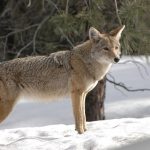 If you follow wildlife in the news, you can’t escape the stories. Cities in California are struggling trying to manage the problem of cohabitating with wild canines. Coyotes spotted in the park, coyote grabs dog, coyote bites Hastings, Nebraska boy…wait…what?
If you follow wildlife in the news, you can’t escape the stories. Cities in California are struggling trying to manage the problem of cohabitating with wild canines. Coyotes spotted in the park, coyote grabs dog, coyote bites Hastings, Nebraska boy…wait…what?
In a recent story in The Hastings Tribune talks about a 1 year old boy being bitten by a coyote at a fireworks celebration in Hastings, Nebraska. Shay Burke, writer for the Hastings Tribune writes:
“According to the report, the family was lighting fireworks and the coyote came walking up the sidewalk from the south. The coyote allegedly bit the child then ran off to the east between some houses.
“The witnesses, the child’s family, said they are positive it was a small coyote,” Hessler said. “They have hunted them in the past and know what they look like. It was mangy looking, hair was falling out.”
Sgt. Brian Hessler with the Hastings Police Department confirmed Wednesday morning that there was a report filed of a coyote allegedly biting a child in the 500 block of South Boston Avenue about 10:30 p.m. Tuesday.
Coyotes aren’t the only wild canines that take up residence in our urban environments. All too often, red fox get pushed out of their
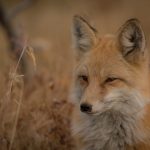
natural habitat into town. Once there, they find abundant food sources such as rabbits, stray cats and garbage. Soon they take up permanent residence. The sight of these creatures makes neighborly conversation and the cute and cuddly pups often earn offerings of table scraps and other food. This is where urban wildlife problems begin. This benevolency of citizens starts the wheels in motion for problem wildlife. A situation that will not end well for the animal or the citizen.
I asked Dave Hastings for his opinion on the matter. Dave is the editor of The Fur Taker Magazine, official magazine of the Fur Takers of America, and a long time fur harvester. ” Well obviously we need to come to our senses and prioritize human and pet safety and health above wild predators. We are not “equal partners in the happy ship earth.” A coyote will eat a child in a heartbeat; not because the coyote is inherently evil, but because the coyote is a wild carnivore, and in his amoral eyes, meat is meat.”
When I asked Dave about what people need to understand about wildlife in urban areas, he had this to say: “First, wildlife is beautiful, admirable, and morally important. But un-threatened populations become dangerous. Raccoons seem cute until a homeowner finds roundworm-infested scat everywhere. Disease, direct threats to people and pets, and ultimately the degenerated health of the animal populations themselves are the result of poor management. People die from this. Children are attacked. Beloved pets are killed and eaten. This is not Disney; this is real.”
For us fur harvesters, this opens up opportunities. Check your plat maps and see who owns the cornfields at the edge of town. Urban areas are usually the hunting grounds, not the residence, so they are coming from somewhere. Check with your local authorities before taking any action against urban wildlife. Above all, be a good example for trappers and hunters everywhere. Practice common sense and obey all regulations.
-Mark Hajny
Nebraska Fur Harvesters Association

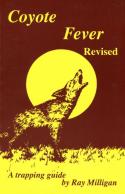 e Fever. Ray knows the coyote like few do. The book is very much to the point and goes through the equipment and sets you need to be successful.
e Fever. Ray knows the coyote like few do. The book is very much to the point and goes through the equipment and sets you need to be successful.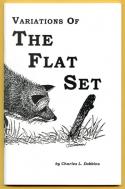
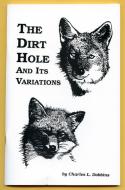 Not only are these entertaining to read, but I also use these books as reference manuals. When things get slow on the line, I can always find a new set to use from these books. The print is small in these books and Dobbins packs a massive amount of content in them.
Not only are these entertaining to read, but I also use these books as reference manuals. When things get slow on the line, I can always find a new set to use from these books. The print is small in these books and Dobbins packs a massive amount of content in them.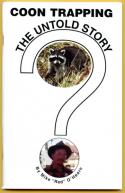
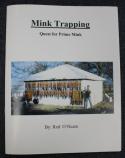 He is quite a character, and very interesting to read and to listen to. Red wrote Coon Trapping – the Untold Story and Mink Trapping – The Quest For Prime Mink. If you want to become a better coon and mink trapper, this is a good start.
He is quite a character, and very interesting to read and to listen to. Red wrote Coon Trapping – the Untold Story and Mink Trapping – The Quest For Prime Mink. If you want to become a better coon and mink trapper, this is a good start.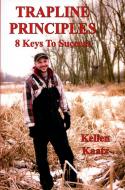 Trapline Principles, 8 Keys To Success by Kellen Kaatz. Not only is Kellen a super helpful guy, but he is also a very knowledgeable trapper and lure maker. Upon finishing this book, you will understand what Kellen believes is the 8 biggest things you need to work at to be a good trapper. An excellent book for making yourself a better trapper.
Trapline Principles, 8 Keys To Success by Kellen Kaatz. Not only is Kellen a super helpful guy, but he is also a very knowledgeable trapper and lure maker. Upon finishing this book, you will understand what Kellen believes is the 8 biggest things you need to work at to be a good trapper. An excellent book for making yourself a better trapper.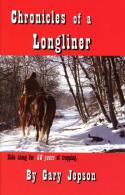 Gary talks of the hardships faced on his ranch, and the good years during the fur boom. Gary documents his travels to conventions, his lure making adventures, and battling the harsh winters in North Dakota through the years.
Gary talks of the hardships faced on his ranch, and the good years during the fur boom. Gary documents his travels to conventions, his lure making adventures, and battling the harsh winters in North Dakota through the years.